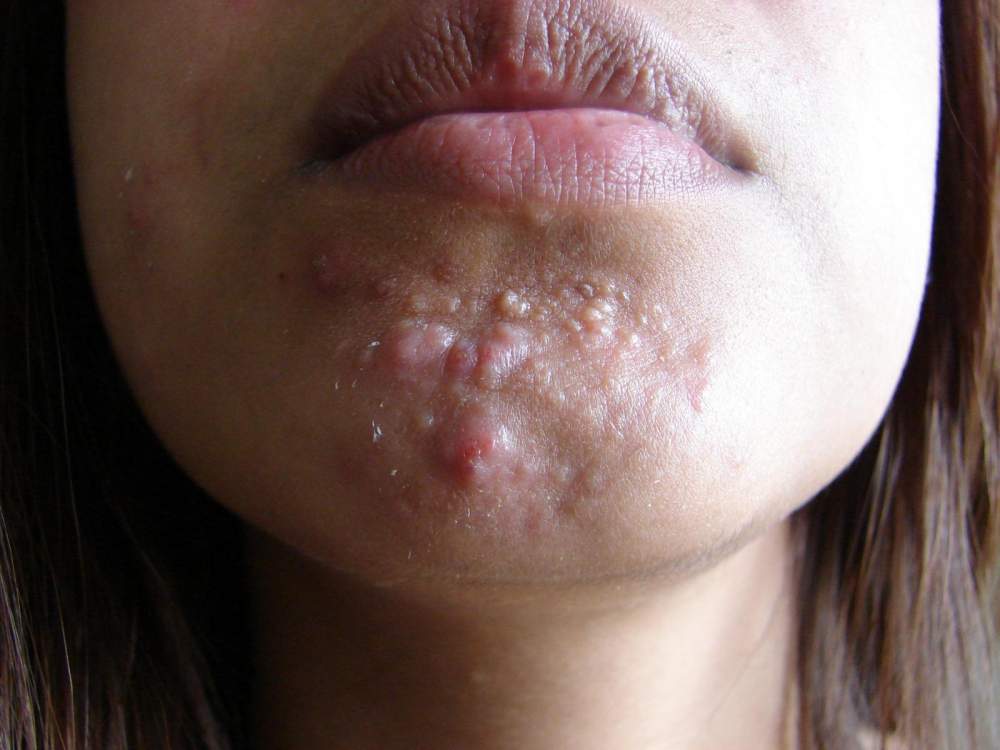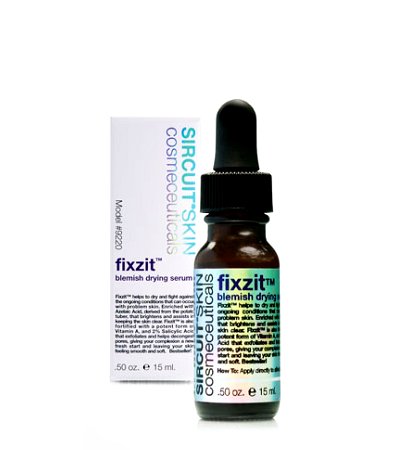 In light of how COVID-19 spreads, along with evidence of widespread COVID-19 illness in communities across the country, CDC recommends that people wear a face covering to cover their nose and mouth in the community setting. This is to protect people around you if you are infected but do not have symptoms. Often times, this can create challenges for those who are acne prone. How can face coverings cause acne?
In light of how COVID-19 spreads, along with evidence of widespread COVID-19 illness in communities across the country, CDC recommends that people wear a face covering to cover their nose and mouth in the community setting. This is to protect people around you if you are infected but do not have symptoms. Often times, this can create challenges for those who are acne prone. How can face coverings cause acne? Acne mechanica is a specific form of acne that is triggered when the skin is pressed or rubbed against heavy clothing or protective gear. It can develop in any areas of friction, pressure, stretching, rubbing, pinching or occlusion of the skin in any individual, regardless of pre-existing acne. It presents as inflammatory papules and pustules that can progress to nodules and cysts.
Acne mechanica is a specific form of acne that is triggered when the skin is pressed or rubbed against heavy clothing or protective gear. It can develop in any areas of friction, pressure, stretching, rubbing, pinching or occlusion of the skin in any individual, regardless of pre-existing acne. It presents as inflammatory papules and pustules that can progress to nodules and cysts.To manage acne mechanic, replace face masks as often as you can, and when possible diminish the four contributing factors to the condition - occlusion, heat, friction, and pressure. Vaseline or aquaphor can be applied to the skin prior to placing the mask if friction is the root of your problem. Below I will address a few power house ingredients to help diminish your breakouts for all skin types. I will discuss in order of strength and potential for irritation.
 Mandelic Acid is an Alpha Hydroxy Acid (an AHA found naturally in almonds). It is more oil soluble compared with most AHAs so it’s ideal for oily, acne prone skin.
Mandelic Acid is an Alpha Hydroxy Acid (an AHA found naturally in almonds). It is more oil soluble compared with most AHAs so it’s ideal for oily, acne prone skin.In addition, Mandelic Acid helps diminish fine lines and wrinkles, reducing the visible effects of sun damage, pigmentation and improving skin texture. Because of its larger molecule size, Mandelic Acid penetrates the epidermis more gently, making it an ideal AHA for sensitive skin types. It is used on people with excess sebum due to its oil targeting properties. It provides a lower risk of irritation and is less drying than its counter part, Salicylic Acid.
 Salicylic Acid is a lipid-soluble agent, that decreases secretion of sebum, which adds to its therapeutic effect. It decreases adhesion of corneocytes (follicular hyperkeratinization), and helps to correct the abnormal shedding of cells. When your hair follicles (pores) get plugged with dead skin cells and oil, blackheads (open plugged pores), whiteheads (closed plugged pores), or pustules often appear. Salicylic Acid penetrates into your skin and works to dissolve the dead skin cells clogging your pores. It can take several weeks of use for you to see its full effect, however these are one of the few ingredients that can provide you immediate relief.
Salicylic Acid is a lipid-soluble agent, that decreases secretion of sebum, which adds to its therapeutic effect. It decreases adhesion of corneocytes (follicular hyperkeratinization), and helps to correct the abnormal shedding of cells. When your hair follicles (pores) get plugged with dead skin cells and oil, blackheads (open plugged pores), whiteheads (closed plugged pores), or pustules often appear. Salicylic Acid penetrates into your skin and works to dissolve the dead skin cells clogging your pores. It can take several weeks of use for you to see its full effect, however these are one of the few ingredients that can provide you immediate relief. Benzoyl peroxide is a commonly used topical treatment for acne. It is safe for adults and children and can be used in pregnancy. Benzoyl peroxide provides: antiseptic properties to reduce the number of skin surface bacteria without causing bacterial resistance. Benzoyl peroxide has broad-spectrum antimicrobial activity that persists for 48 h even when conditions for bacterial growth are optimal. It also reduces the number of yeasts on the skin surface. My favorite trait, it acts as an oxidizing agent! Working for specific anaerobic bacteria, hydrogen peroxide works by releasing an unstable oxygen molecule that is capable of being drawn into the follicle and killing anaerobic (oxygen hating) bacteria. Consequently creating a follicular flushing action and reducing inflammation. This has the potential to hurt the skin when used alone, and can cause minor free radical damage. It is very important to pair to choose appropriate formulas and pair it with reparative skincare products that fight free radical damage, such as antioxidants like: zinc, vitamin c, resveratrol, niacinamide, vitamin E, green tea extract, sea buckthorn and/or multiple antioxidant formulas.
Benzoyl peroxide is a commonly used topical treatment for acne. It is safe for adults and children and can be used in pregnancy. Benzoyl peroxide provides: antiseptic properties to reduce the number of skin surface bacteria without causing bacterial resistance. Benzoyl peroxide has broad-spectrum antimicrobial activity that persists for 48 h even when conditions for bacterial growth are optimal. It also reduces the number of yeasts on the skin surface. My favorite trait, it acts as an oxidizing agent! Working for specific anaerobic bacteria, hydrogen peroxide works by releasing an unstable oxygen molecule that is capable of being drawn into the follicle and killing anaerobic (oxygen hating) bacteria. Consequently creating a follicular flushing action and reducing inflammation. This has the potential to hurt the skin when used alone, and can cause minor free radical damage. It is very important to pair to choose appropriate formulas and pair it with reparative skincare products that fight free radical damage, such as antioxidants like: zinc, vitamin c, resveratrol, niacinamide, vitamin E, green tea extract, sea buckthorn and/or multiple antioxidant formulas.Retinoids help to break the acne cycle by normalizing the shedding of pore clogging skin cells and by demonstrating anti-inflammatory effects. Essentially, retinoids work deep within the pores to keep them from clogging so breakouts are stopped in their tracks, before they begin developing. While retinoids boast astounding benefits for the skin, there are also a few downsides. Fortunately, they can be managed. When you first use retinoids on your skin, you may notice redness or peeling and for a short time your acne can even appear worse. But don’t give up and stop the treatment.
First, since retinoids can make your skin slightly sensitive as you acclimate the first 4-6 weeks, try also using a gentle moisturizer to manage irritation, and never use more of the product or use it more frequently than directed as it can increase side effects.

 Zinc has been used as a therapeutic ingredient for centuries and is an important micronutrient required for the normal function of skin. It provides wound healing, aids in tissue repair, protects against oxidative stress and the suppression of sebum production by its antiandrogenic activity. The exact mechanism of zinc in acne treatment remains poorly elucidated and is considered to act directly on microbial inflammatory balance and facilitate absorption when used in combination. Topical zinc alone as well as in combination with other agents is effective perhaps because of its anti-inflammatory activity and ability to reduce P.acnes counts by inhibition of P.acnes lipases and free fatty acid levels that acne bacteria produces. Studies have also shown that topical zinc has the ability to inhibit the enzymes that lead to the degradation of collagen and be beneficial for scars. Zinc has been used extensively both topically and systemically for the management of acne. Oral zinc is reportedly more effective in the treatment of severe acne than for the treatment of mild to moderate acne but nausea, vomiting, and diarrhea occur frequently. A methionine bound zinc complex with antioxidants has been tried and found useful in managing mild to moderate acne.
Zinc has been used as a therapeutic ingredient for centuries and is an important micronutrient required for the normal function of skin. It provides wound healing, aids in tissue repair, protects against oxidative stress and the suppression of sebum production by its antiandrogenic activity. The exact mechanism of zinc in acne treatment remains poorly elucidated and is considered to act directly on microbial inflammatory balance and facilitate absorption when used in combination. Topical zinc alone as well as in combination with other agents is effective perhaps because of its anti-inflammatory activity and ability to reduce P.acnes counts by inhibition of P.acnes lipases and free fatty acid levels that acne bacteria produces. Studies have also shown that topical zinc has the ability to inhibit the enzymes that lead to the degradation of collagen and be beneficial for scars. Zinc has been used extensively both topically and systemically for the management of acne. Oral zinc is reportedly more effective in the treatment of severe acne than for the treatment of mild to moderate acne but nausea, vomiting, and diarrhea occur frequently. A methionine bound zinc complex with antioxidants has been tried and found useful in managing mild to moderate acne. As a last remark, I hope this helps alleviate some stress. Although there is no cure for acne, it is manageable.
If you have any questions or comments, please leave them below!
with love..
#amareaesthetics
#acne #covid19 #coronavirus #masks #maskbreakouts #retinoids #salicylicacid #benzoylperoxide #mandelicacid #zinc
References:
1. Mazhar M; Simpson M; Marathe K. Inner thigh friction as a cause of acne mechanica. Pediatr Dermatol. 2019; DOI: 10.1111/pde.13817
2. Dayal S, Kalra KD, Sahu P. Comparative study of efficacy and safety of 45% mandelic acid versus 30% salicylic acid peels in mild-to-moderate acne vulgaris [published online September 25, 2019].J Cosmetic Dermatol. doi:10.1111/jocd.13168
3. Sardana K, Garg VK. An observational study of methionine-bound antioxidants for mild to moderate vulgaris.Dermatology and Therapy.2010;23:411–418.
4. Pierard-Franchimont C, Goffin V, Visser JN, Jacoby H, Pierard GE. A double blind controlled evaluation of the sebosuppressive activity of topical erythromycin-zinc complex.European Journal of Clinical Pharmacology.1995;49(1-2):57–60.
